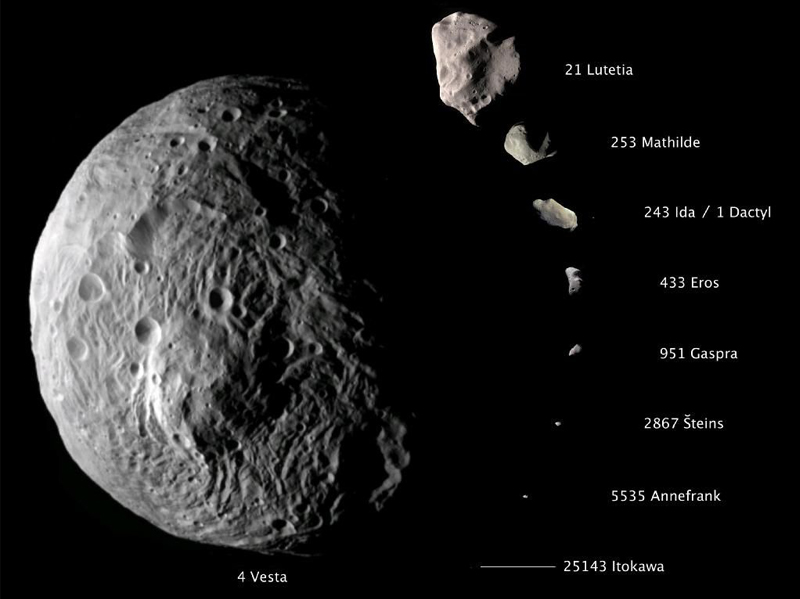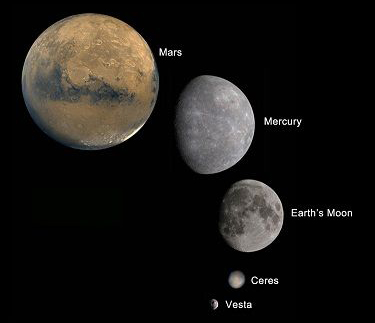Vesta

Image credit: NASA/JPL-Caltech/JAXA/ESA, source NASA/JPL
The asteroid Vesta is shown with size comparison to several other asteroids. This image of Vesta was taken by the Dawn spacecraft. When Dawn entered orbit around Vesta on July 15, 2011, it was the first probe to enter orbit around an object in the main asteroid belt between Mars and Jupiter.
 |
This image of Vesta was taken as Dawn was leaving its orbit around the asteroid. Vesta is 330 miles (530 kilometers) in diameter and the second most massive object in the asteroid belt after Ceres. Ground- and space-based telescopes have obtained images of Vesta for about two centuries, but they have not been able to see much detail on its surface. |
Minor planet (4) Vesta was first sighted through a telescope on March 29, 1807 by Heinrich Wilhelm Matthaus Olbers (1758-1840). Subsequent observations determined that the planetary body has an orbital period of 3.63 years, with a semi-major axis of around 2.36 AUs (slightly closer than Ceres's 2.77 AUs) and an eccentricity of 0.090 and an inclination of 7.14 degrees from the plane of the ecliptic. Its orbit places Vesta in the Main Asteriod Belt, but the object more closely resembles a small planet or Earth's Moon than another asteroid. |  Image credit: Vesta site |
Solar System Illustration
Solar System Concepts
Reference
Chaisson and McMillan
Ch 14
| HyperPhysics********** Astrophysics | R Nave |